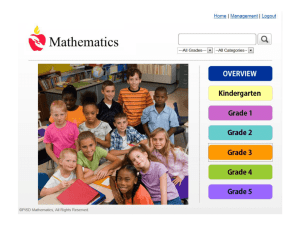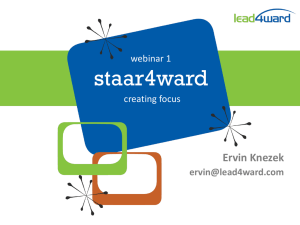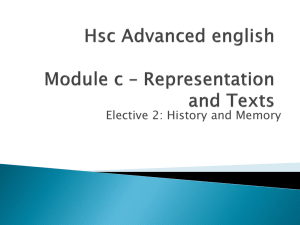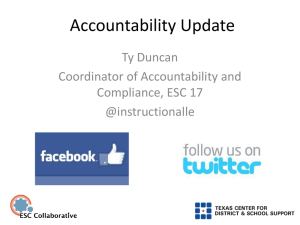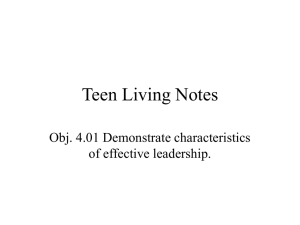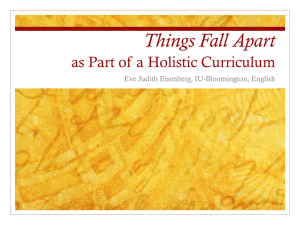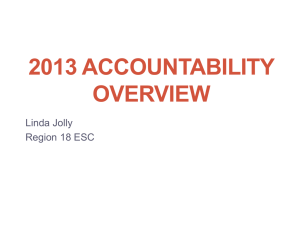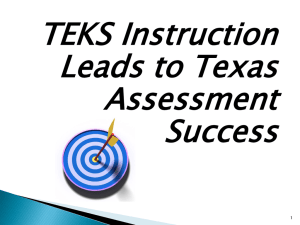Presentation
advertisement
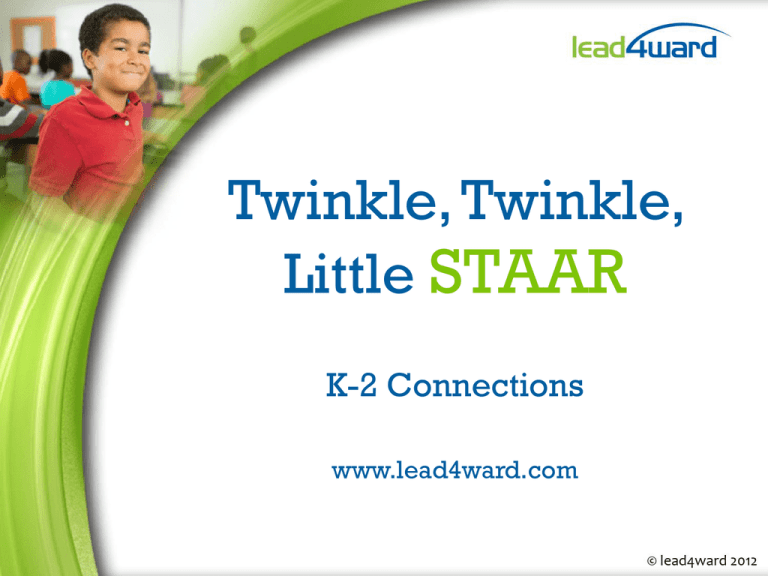
Twinkle, Twinkle, Little STAAR K-2 Connections www.lead4ward.com GOOD MORNING! The big questions… • How do we ensure that the learning in grades K-2 prepares students for the rigor of STAAR? • How do we create developmentally appropriate assessments for young learners? • Which data are important to collect? • How can I use the new data to plan for instruction and intervention? the vibe STAAR State of Texas Assessments of Academic Readiness 5 And aren’t we ALL about READINESS? 6 But how do we know if the students are ready for success on a rigorous test like STAAR? Kindergarten – Grade 2 • Academic Readiness • STAAR starts in grade 3 • Learning starts every day in every classroom • We are all in this together 8 Making this a little interactive . . . 9 Connect the Dots But… • We don’t have performance standards set for K-2 • We don’t have universal collection tools • Many state assessment tools only measure a small domain of learning Phase in… 12 Phase in… Phase 1 • 2011-12 • 2012-13 Phase 2 • 2013-14 • 2014-15 Final Recommended • 2015-16 1 1 1 Why is the Final Recommended Standard so high? What do you see? Grade Reading Math Grade 3 75% 80% Grade 4 75% 79% Grade 5 76% 78% Grade 6 77% 71% Grade 7 76% 67% Grade 8 75% 63% 85% Grades K-2 80% English III Grades 75% K-2 70% 65% Algebra II 60% 55% Grade 3 Grade 4 Grade 5 Grade 6 Reading Math Grade 7 Grade 8 54% 66% 52% 54% 50% 66% 58% 57% 56% 54% 54% 54% 54% 52% 52% 52% 52% 50% 48% 43% 40% 39% 52% 58% 40% 57% 39% 52% 56% 52% 54% 48% Rethinking Scores 85 75 55 Well Prepared Sufficiently Prepared Getting There PK K 1 2 3 K 1 2 3 4 1 2 3 4 5 What does it mean to be a teacher of academic readiness? k gr. 1 gr. 2 gr. 3 gr. 4 gr. 5 gr. 6 gr. 7 gr. 8 26 So… • K- 2 performance has to increase faster than other grades for students to be successful over time • We have 2-3 years. • We have the tools – but need the structures Thinking about the Standards? Readiness Supporting Process 2 Readiness Standards ≈ 30% of assessed TEKS ≈ 65% of STAAR – IMPORTANT for the next grade level – IN-DEPTH instruction – BROAD and DEEP ideas 2 30 Supporting Standards ≈70% of assessed TEKS ≈35% of the test – INTRODUCED in the current grade but emphasized in a later grade Scaffold 2 Process Standards –Tools to KNOW Demonstrate Access –Ways to SHOW 32 Process Standards Assessed in CONTEXT [Logical Pairings] ≥75% questions in Math (Grades 3-8) ≥40% questions in Science ≥30% questions in Social Studies ≈ 82% ≈ 60% ≈ 55% 2 33 Process Standards What Content Area? interpret oral, visual, and print material by identifying the main idea, predicting, and comparing and contrasting. REMEMBER NOT MEMORIZE Process Standards • Most process standards start in K-2 • Most process standards stay through high school 3 Kindergarten- Grade 2 Snapshots • TEA only developed materials for tested grades • But as we all know… – All grades play a role – Early learning matters – Standards align between and among grade levels 38 The Small Print * Aligned with STAAR Assessed Curriculum NOTE: The classification of standards on this snapshot represent the reviewed and synthesized input of a sample Texas Kindergarten – Grade 2 teachers. This snapshot DOES NOT represent a publication of the Texas Education Agency. District curriculum reflect other classifications. Revised September 2011 * Aligned with STAAR Assessed Curriculum NOTE: The classification of standards on this snapshot represent the reviewed and synthesized input of a sample Texas Kindergarten – Grade 2 teachers. This snapshot DOES NOT represent a publication of the Texas Education Agency. District curriculum may reflect other classifications. Revised September 2011 39 4 40 Process in Reading and Writing… Ineligible for STAAR in Gr. 3-English III BUT WAY important 5 41 How are we doing based on CURRENT data? Collected any data THIS year? What kind of data do you currently collect on K-2 student performance? A. B. C. D. Data at the SE level Overall content area performance Process performance on instruments like TPRI Report card data only 45 Anchoring the System Heat Maps 6 Readiness Supporting Process What does this have to do with K-2? 6 http://lead4ward.com/resources/ 7 8 Assessment Options • Test • Performance Task • Structured observation Developmentally Appropriate • Reading – Shared Reading – Independent Reading • Math – Concrete – Representational – Abstract • Science/Social Studies – Process Collecting Data • Must be at the SE level (genre for reading) • Over time cumulative – aggregated assessment • Point in time – summative assessment Some Important Considerations • Novelty – Got it the way I taught it – Can apply it – Context or Developmental Levels – Process Skills • Over time cumulative – aggregated assessment • Point in time – summative assessment Over time cumulative Aggregated Assessment • Collect data throughout the year on all SEs • Assess readiness standards with more questions/tasks to ensure transfer of learning • Combine into one data report Point in Time Summative Assessment • End of year assessment • Assess linked (*) standards • Beware false positives – Grade 3.3B 54% – Grade 2.3A 88% Reporting Categories - Reading • Understanding across Genres • Understanding and Analysis of Literary Texts • Understanding and Analysis of Informational Texts 58 Understanding Across Genres Literary Texts 59 Understanding Across Genres Informational Texts 60 Creating and Collecting Data Point in Time - Reading • Assess both readiness genres – Fiction – Expository • Sample supporting genres – One other (varied by classroom) Creating and Collecting Data Point in Time - Reading • Assess both readiness genres – Fiction • Select 2 passages • Create/select 3 questions per passage (Figure 19 D) • Create/select 3 questions per passage (Figure 19 E) – Expository • Select 2 passages • Create/select 3 questions per passage (Figure 19 D) • Create/select 3 questions per passage (Figure 19 E) • Sample supporting genres • Select 1 passage (can vary by classroom for grade 2) • Create/select 3 questions – academic vocabulary of genre Reading Ways to Show Figure 19 Retell, summarize, paraphrase, and synthesize texts Make Inferences SE # Data SE # Data Make Connections SE K (D) make inferences based on the cover, title, illustrations, and plot (E) retell or act out important events in stories; (F) make connections to own experiences, to ideas in other texts, and to the larger community and discuss textual evidence 1 (D) make inferences about text and use textual evidence to support understanding; (E) retell or act out important events in stories in logical order; F) make connections to own experiences, to ideas in other texts, and to the larger community and discuss textual evidence 2 (D) make inferences about text and use textual evidence to support understanding (E) retell important events in stories in logical order; F) make connections to own experiences, to ideas in other texts, and to the larger community and discuss textual evidence 3 (D) make inferences about text and use textual evidence to support understanding (E) summarize information in text, maintaining meaning and logical order; (F) make connections (e.g., thematic links, author analysis) between literary and informational texts with similar ideas and provide textual evidence. 16 4 # Data Developmentally Appropriate • Shared Reading – Read to the student – Student answers independently • more complex questions • Independent Reading – Student reads on level text – Student answers independently • less complex questions Reporting Categories - Writing • Composition • Revision • Editing 66 Ready to Write? Write to get Ready… • Examine the Readiness Standards! 67 K-2 Writing task • Personal Narrative • Expository • Grade 2 – Released prompts or district created – First draft only – Ranked by grade 2 then grade 4 teachers • Strongest to developing Reporting Categories - Math • Connect to the Strands in the TEKS – Numbers, Operations, Quantitative Reasoning – Patterns, Relationships, Algebraic Reasoning – Geometry and Spatial Reasoning – Measurement – Probability Statistics 69 9 70 Collecting Data Math • Aligned standards – Readiness (3 questions each) – Process Problem Solving (2 ways) • Used strategy • Got it right select addition or subtraction to solve problems using two-digit numbers, whether or not regrouping is necessary 10 11 Focus on the Learner As a teacher, I think it is reasonable to expect that my students will be ____________ for their next grade or course 1. Inadequately prepared 2. Sufficiently prepared 3. Well prepared 4. Perfectly prepared Learning STAAR Performance Standards Satisfactory Advanced Level I Level II Level III Unsatisfactory Academic Performance Satisfactory Academic Performance Advanced Academic Performance 77 Inadequately Prepared Level I Unsatisfactory Academic Performance – For this year’s test – For the next grade – To graduate They FAILED last year, and… – Are likely to next year – Have major concept gaps Sufficiently Prepared Level II Satisfactory Academic Performance – For this year’s test – For the next grade/course – To graduate They PASSED last year, but… – Will they next year? Well Prepared Level III Advanced Academic Performance – For this year’s test – For the next grade/course – To graduate They PASSED last year, and… – Should pass next year Quintiles and Common Specific or Systemic Issues 12 Rethinking Scores 85 75 55 Well Prepared Sufficiently Prepared Getting There 13 Thank You!
